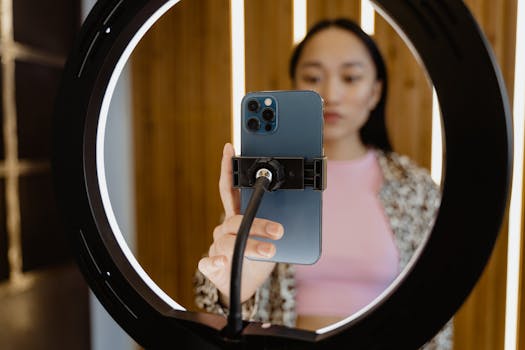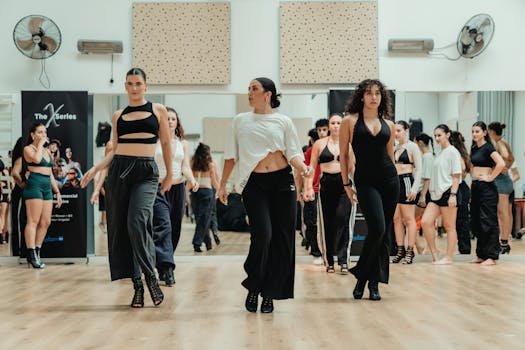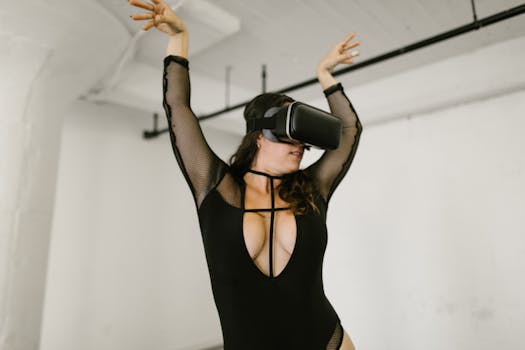Anúncios
Dance has always been a vibrant form of artistic expression that resonates deeply with human emotions. As society evolves, so do its forms of expression. In recent years, technology has increasingly influenced how dance is created, performed, and experienced.
From immersive video installations to cutting-edge choreography software, technology has revolutionized the dance landscape. Whether it’s enhancing performances or providing new platforms for discovery, its impact is undeniable.
This article delves into the various ways technology plays a pivotal role in modern dance. By exploring innovations and trends, we will uncover how these advancements shape the future of this dynamic art form.
Digital Platforms and Dance Accessibility
Digital platforms have transformed the dance scene by making performances accessible to a broader audience. Online streaming services allow viewers to experience shows from the comfort of their homes.
Moreover, social media platforms have revolutionized how choreographers share their work. They can upload short dance videos or live-stream performances, reaching millions instantly.
Anúncios
Online tutorials and workshops provide aspiring dancers with invaluable resources. These platforms allow individuals to learn various dance styles at their own pace and convenience.
Additionally, digital accessibility furthers inclusivity within the dance community. Dancers from different backgrounds and geographical locations can participate in global conversations and collaborations.
The rise of virtual dance festivals showcases the potential of technology in the arts. Participants can connect, collaborate, and share their passion for dance without the constraints of distance.
Anúncios
Choreography Software and Dance Creation
Choreography software has emerged as an essential tool for professional and amateur dancers alike. These programs enable users to visualize dances in a digital environment, enhancing creativity.
For choreographers, software aids in planning and organizing dance sequences effectively. The ability to manipulate visuals helps in refining movements and formations before actual rehearsals.
Beyond planning, software can also enhance collaboration among dancers. Algorithms can analyze movements, suggesting adjustments that enhance overall performance quality.
A notable benefit of using technology in choreography is the ability to capture and analyze performances. This data-driven approach allows for continual improvement and evolution of dance styles.
As technology advances, so do the tools available for creating dance. New functionalities continue to emerge, making choreography more dynamic and accessible than ever before.
Augmented Reality and Dance Experiences
Augmented reality (AR) introduces a unique dimension to dance performances. By overlaying digital elements on the physical world, AR enhances the viewing experience for audiences.
Imagine watching a dance performance where digital visuals interact with live dancers. This blend creates a more immersive and engaging experience, captivating audiences in exciting new ways.
Moreover, AR can be used as a training tool for dancers. They can visualize how their movements align with choreographic intentions, receiving real-time feedback to enhance their abilities.
Experimental projects combining AR and dance are gaining traction, driving innovation in both fields. Such interdisciplinary collaborations push the boundaries of creativity and redefine artistic expression.
The incorporation of AR technology into dance narratives also broadens storytelling avenues. Creative application allows choreographers to weave complex tales through movement enhanced by digital elements.
Virtual Reality and Dance Imagination
Virtual reality (VR) takes the relationship between dance and technology to a whole new level. This immersive technology allows dancers and audiences to step into alternate worlds created through movement.
For choreographers, VR presents an opportunity to explore innovative environments for their works. New dimensions each provide ample creative possibilities to engage audiences in previously unimaginable ways.
Dancers can utilize VR tools for practice and rehearsal, offering a safe space to experiment without the physical constraints of a traditional studio. This leads to boundless exploration.
Furthermore, VR can create a sense of shared experience even when participants are far apart. Dancers from diverse locations can rehearse together in a virtual space, fostering collaboration and connection.
The potential for VR in dance extends to education as well, bringing lessons and experiences to learners anywhere. This accessibility fosters a global understanding of dance cultures and practices.
Wearable Technology in Dance Training
Wearable technology has gained traction in the dance community, offering invaluable data for training purposes. Dancers can wear devices that track movement, providing insights into performance metrics.
Metrics such as speed, balance, and even energy expenditure can be monitored. This data helps dancers refine their techniques and enhances the effectiveness of their training regimens.
With wearable technology, instructors can track progress more accurately. Real-time feedback helps students improve their skills and align their movements with choreographic expectations.
Additionally, wearables create opportunities for injury prevention. By analyzing movement patterns, dancers can identify potential stress points, leading to more informed choices during practice.
As technology evolves, so too do the tools available for enhancing dance training. The incorporation of wearables opens up pathways for dancers to achieve new levels of excellence.
Social Media: A New Stage for Dancers
Social media platforms have become essential for dance promotion and discovery. Dancers use platforms like Instagram and TikTok to showcase their talent and creativity to wider audiences.
These platforms allow users to engage in challenges, collaborations, and trends. A simple hashtag can lead to viral sensations and new opportunities for rising stars.
Social media also facilitates connections within the dance community. Dancers, choreographers, and institutions can share insights, celebrate achievements, and provide support to each other, fostering camaraderie.
The accessibility of sharing performances encourages diverse expressions of dance. Artists from various backgrounds gain exposure, allowing a richer tapestry of dance styles to emerge.
While social media presents opportunities, it also challenges dancers to maintain authenticity. Balancing art with the pressure of online validation requires mindfulness and resilience.
Conclusion
The role of technology in dance is transformative and continually expanding. By enhancing accessibility, creativity, training, and communication, technology is reshaping how we experience dance today.
Dancers and choreographers are embracing these technological advancements, finding new ways to tell stories and connect with audiences. This evolution promises a dynamic future for the art form.
As the boundaries between technology and dance blur, we can expect innovative collaborations that redefine expression. The rich interplay between these fields will undoubtedly pave the way for extraordinary experiences.
Ultimately, technology serves not only as a tool but also as a catalyst for creativity within the dance world. Embracing these advancements enriches the community and opens new avenues for exploration.
The future of dance is bright, driven by the synergy between human movement and technological innovation. Together, they continue to inspire and engage audiences in meaningful ways.
| Technology | Role in Dance | Impact on Performance |
|---|---|---|
| Choreography Software | Visualizes sequences | Refines movements |
| AR | Enhances performances | Creates immersive experiences |
| VR | Expands environments | Fosters collaboration |
| Wearables | Tracks movement | Enhances training |
| Social Media | Promotes talent | Connects communities |
- Live-streaming performances increase accessibility.
- Virtual workshops promote skill development.
- Wearables help in injury prevention.
- Social media spreads dance culture globally.
- AR and VR create new artistic narratives.



